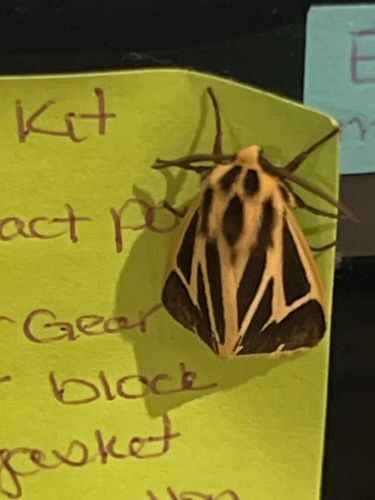Eight-spotted forester moth
Scientific Name: Alypia octomaculata
Order & Family: Lepidoptera (Order), Noctuidae (Family)
Size: Wingspan typically 3-3.7 cm (1.2-1.5 inches).

Natural Habitat
Woodlands, gardens, parks, and vineyards where its host plants (grapevine and Virginia creeper) are found.
Diet & Feeding
Adult moths do not feed, or they may sip nectar from flowers. Larvae (caterpillars) feed on the leaves of plants in the grape family (Vitaceae), primarily grapevine (Vitis spp.) and Virginia creeper (Parthenocissus quinquefolia).
Behavior Patterns
This moth is diurnal, meaning it is active during the day, which is unusual for a moth. It mimics noxious insects like wasps to deter predators. The caterpillars are also distinctively colored (yellow, black, and white) and have stinging hairs (though not truly stinging, they can cause irritation) as a defense mechanism. They overwinter as pupae in cocoons in the soil.
Risks & Benefits
Potential risks include being a pest to grapevines, particularly in vineyards, where their caterpillars can defoliate plants. Considered beneficial in their role as pollinators (though minor) and as a food source for other animals in the ecosystem.
Identified on: 10/7/2025